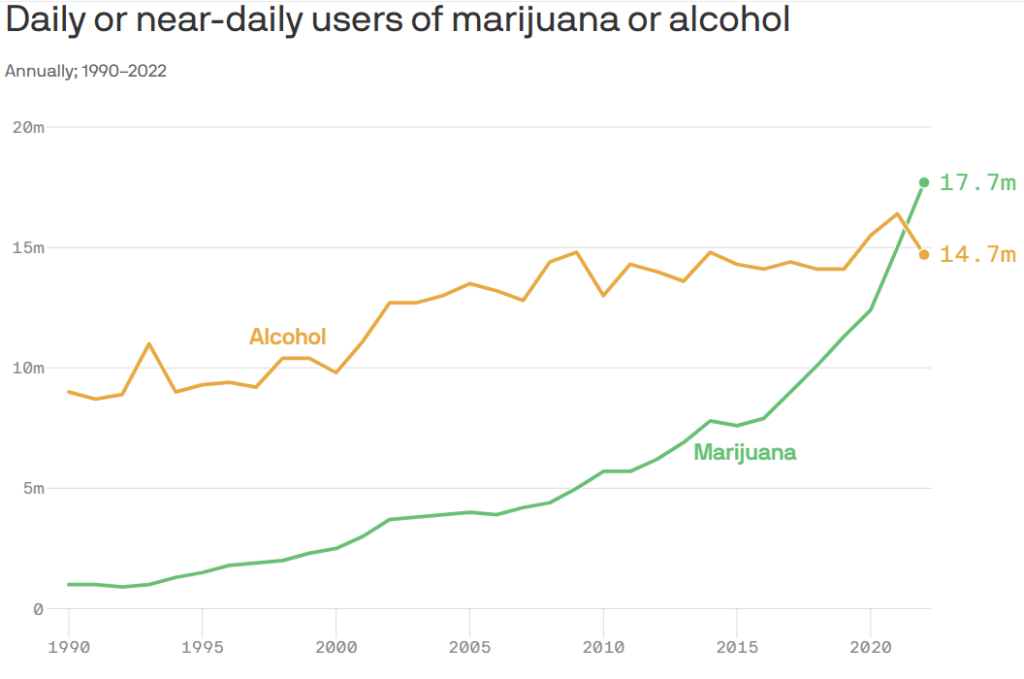
According to a new study, daily marijuana use in the United States has surpassed daily alcohol consumption for the first time ever. Psychedelic and other hallucinogenic use has also seen a sharp increase in recent years.
By the numbers: In 2022, approximately 17.7 million people reported using marijuana daily or nearly daily, compared to 14.7 million who reported daily or near-daily alcohol consumption.
- While alcohol is still more commonly used overall, 2022 was the first year that intensive marijuana use outpaced daily and near-daily drinking.
- Jonathan Caulkins, a cannabis policy researcher at Carnegie Mellon University, highlighted that “about 40% of cannabis users consume it daily or almost daily, a usage pattern more akin to tobacco than to typical alcohol consumption.”
Research indicates high-frequency marijuana users are more prone to addiction and the negative effects of THC use.
- According to Dr. David A. Gorelick, a psychiatry professor at the University of Maryland School of Medicine, research shows that high-frequency users are more likely to become addicted to marijuana.
- “High-frequency use also increases the risk of developing cannabis-associated psychosis,” a severe condition where a person loses touch with reality, he added.
THC levels on the rise: The normalization of marijuana use comes amid increasing THC levels in cannabis products. Dr. Roneet Lev, an addiction medicine doctor in San Diego, explains how marijuana has changed over the years:
- Prior to legalization, marijuana plants were bred to produce higher concentrations of THC, the chemical compound in the plant that induces euphoria and alters users’ perceptions of reality.
- In the 1960s, the THC content in marijuana was less than 2%, meaning the marijuana smoked by hippies was relatively mild.
- By the 1990s, the THC levels in marijuana had increased to around 5%, showing a significant rise in potency over a few decades.
- By 2015, THC levels had soared to over 20%, making modern marijuana far more potent than its natural ancestors.
- “It’s a freak plant that resembles nothing of what has existed in nature,” said Dr. Lev, highlighting the dramatic transformation of marijuana.
Why it matters: The rapid increase in daily marijuana use and the rising THC levels in cannabis products raise significant concerns that appear to be overlooked as policymakers in the US continue to push forward with legalization efforts.
Have a story? Please forward any tips or leads to the editors at [email protected]





















